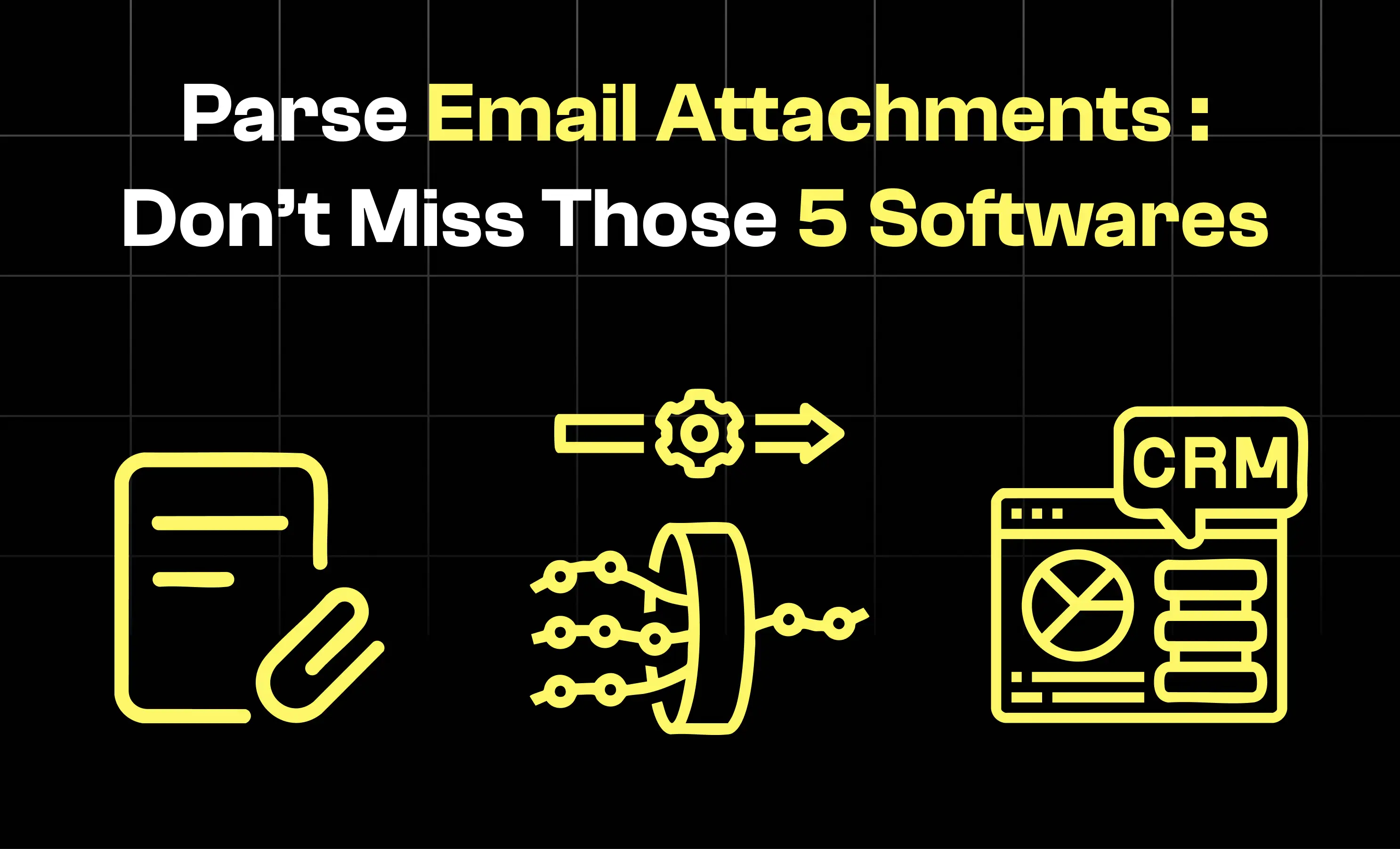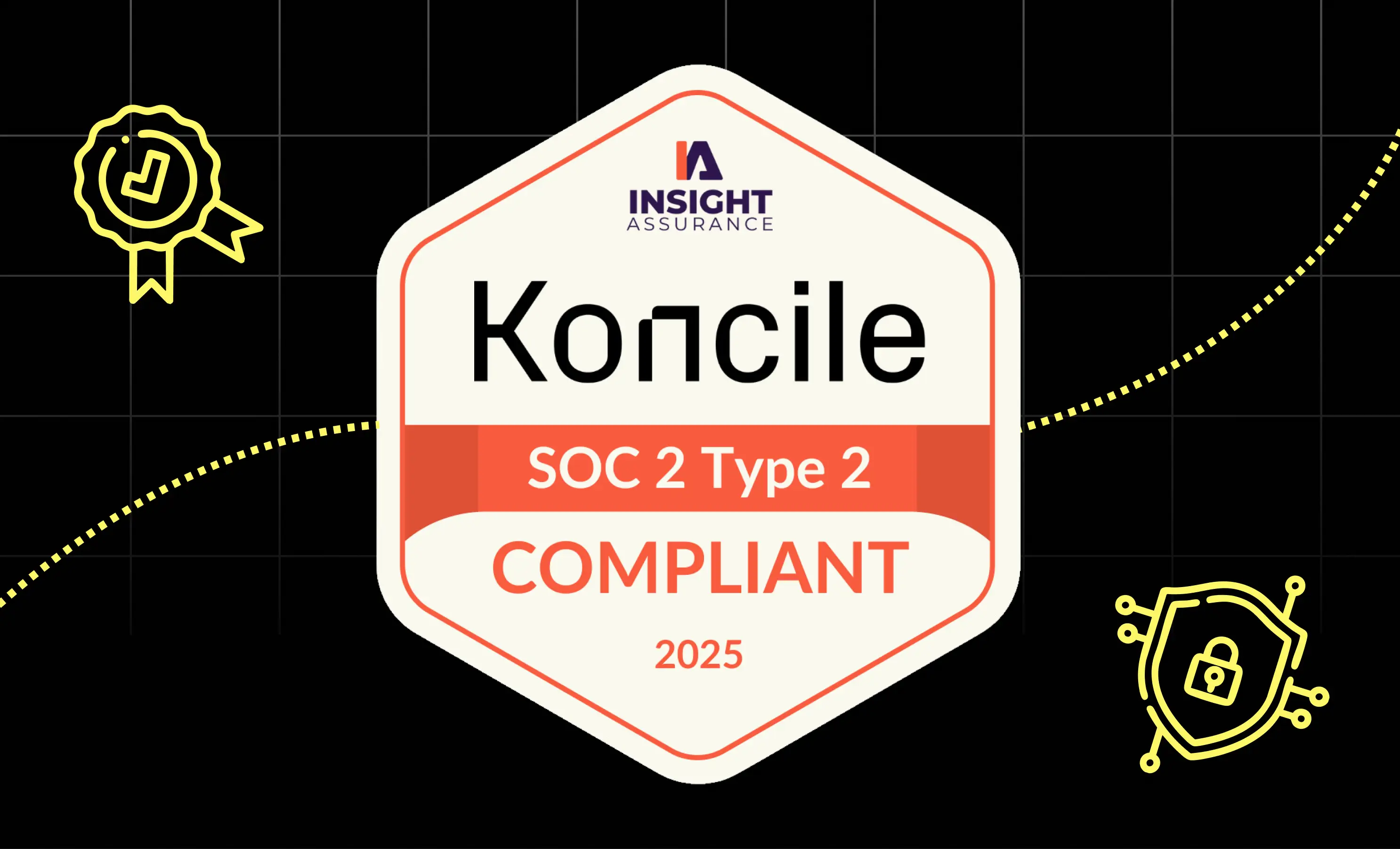
Discover the top 5 software for parsing email attachments in 2025. Automate extraction of PDFs, images, CSVs and improve workflow efficiency.
Comparatives
Dernière mise à jour :
November 20, 2025
5 minutes
In 2026, document automation will be measured not by speed, but by trust and compliance. Here are five key predictions for OCR and intelligent workflows.
Five key predictions for OCR and document automation in 2026, focused on trust, compliance, and human-in-the-loop workflows.
2025 was the year of speed. Everyone wanted faster extraction, faster deployment, faster scale. But 2026 is different. The year ahead won't be defined by how fast automation moves, but how responsibly and accountably it operates.
At Koncile, we’ve seen hundreds of organisations deploy OCR and document AI tools that delivered speed but missed something essential: trust.
As automation moves from back-office utilities to the forefront of our systems, factors like governance, context, and compliance have the power to make or break a business.
Here’s how I see the landscape evolving in 2026, and what smart business leaders are doing right now to prepare.
We’re entering the era of mandatory oversight. As automation reaches deeper into finance, healthcare, and legal workflows, compliance frameworks such as GDPR, HIPAA, and SOX are tightening expectations around data validation and auditability.
In response, many businesses are reintroducing human review for at least one stage of their critical document pipelines. This represents a complete reversal from early automation thinking, when human validation was seen purely as friction.
Consider a healthcare provider using OCR to extract diagnosis codes from admission forms. Without a human-in-the-loop, a single misclassified code could lead to insurance denial or patient misbilling. With a verification layer in place, exceptions are flagged instantly, protecting both compliance posture and patient trust.
The urgency is increasing. In the coming year, regulators are expected to formalise human review requirements in automated decision-making across Europe and North America.
The best automation strategies will blend machine precision with human judgment. And in 2026, putting a human-in-the-loop won’t slow you down; it will keep you in business.
Find out more how Koncile HITL validation can help your business
The cloud vs. on-prem debate is over, and the future is hybrid OCR. Smart companies will be processing sensitive data locally while leveraging the cloud for scale and collaboration.
The reason is simple: enterprises no longer want to choose between control and capability. They want both.
While the first wave of OCR tools was entirely on-premise, the last decade’s rush to the cloud exposed a new pain point in data sovereignty. In sectors like banking, healthcare, and government, regulations increasingly restrict where data can travel and who can process it.
IDC forecast that by 2026, hybrid and edge models will account for the majority of new document automation rollouts, reflecting a broader enterprise shift toward flexible, location-aware AI infrastructure.
Verdict:
Hybrid is now a survival strategy. In 2026, the organisations that thrive will be the ones that understand that data privacy and operational agility are part of the same intelligent architecture.
Think about the last time you reviewed a complex document. You weren't just reading words; you were interpreting intent. In 2026, large language models are bringing that same level of understanding to automated document processing.
Modern OCR systems don't just recognise text, they understand context, extract relationships between data points, and identify patterns that matter for business decisions.
This shift from data capture to document intelligence has practical implications across industries:
The technical leap here is significant. Where traditional OCR might achieve 95% character accuracy, LLM-enhanced systems are now measured by semantic accuracy.
If your current OCR workflow stops at text extraction, 2026 is the year to explore what semantic understanding could unlock for your specific business processes.
As global data privacy regulations expand, enterprises are rethinking how they evaluate OCR solutions. The question is no longer about processing speed, but how you prove to regulators and customers exactly how documents were handled.
This shift is driving demand for what is called data provenance. Think of it as a chain of custody for digital files. Data provenance tracks who accessed a document, what processing occurred, where and when it happened, and what transformations were applied.
Every enterprise RFP in 2026 will include clauses on:
These aren't just technical checkboxes; they build customer trust and maintain regulatory compliance.
Verdict:
With trust becoming a competitive differentiator, companies that can demonstrate transparent, verifiable document handling will win contracts over faster competitors who can't prove compliance.
While AI-powered OCR eliminates paper emissions, it introduces new environmental costs through computational energy consumption.
Recent analysis of the Google Gemini AI model found that the median text prompt uses 0.24 watt-hours of energy, emits 0.03 grams of CO₂ equivalent, and consumes 0.26 milliliters of water for data center cooling.
While these per-query numbers seem small, they compound rapidly at enterprise scale.
Despite AI's computational costs, the overall environmental case for digital document processing remains strong. The key is thoughtful implementation, and organisations should view sustainability as a selection criterion alongside accuracy, speed, and cost.
Going paperless with AI-powered OCR remains a net positive for sustainability, but it's not a free pass. As businesses adopt these technologies at scale, energy efficiency should become a non-negotiable evaluation criterion.
2026 marks a turning point for document automation. The industry’s early obsession with speed is giving way to something more mature; accountable intelligence. Trust, transparency, and traceability will become the true performance metrics of intelligent automation.
At Koncile, we see this shift every day. The organisations leading the way aren’t chasing the newest feature, they are designing automation that humans can trust, audit, and improve.
As AI reshapes how documents move through your business, the winners of 2026 will be the ones that build systems not just to work faster, but to work responsibly.
👉 Get a free workflow audit and see how Koncile builds trust into every automation layer.
Move to document automation
With Koncile, automate your extractions, reduce errors and optimize your productivity in a few clicks thanks to AI OCR.
Resources

Discover the top 5 software for parsing email attachments in 2025. Automate extraction of PDFs, images, CSVs and improve workflow efficiency.
Comparatives

Automatically detect errors and fraud in supplier invoices. Learn how AI invoice verification software connects to your ERP to match POs and pricing grids, ensure compliance, and cut hidden costs.
Tutorials

Koncile is now SOC 2 certified, reinforcing our commitment to security, reliability, and world-class data protection for all customers.
News